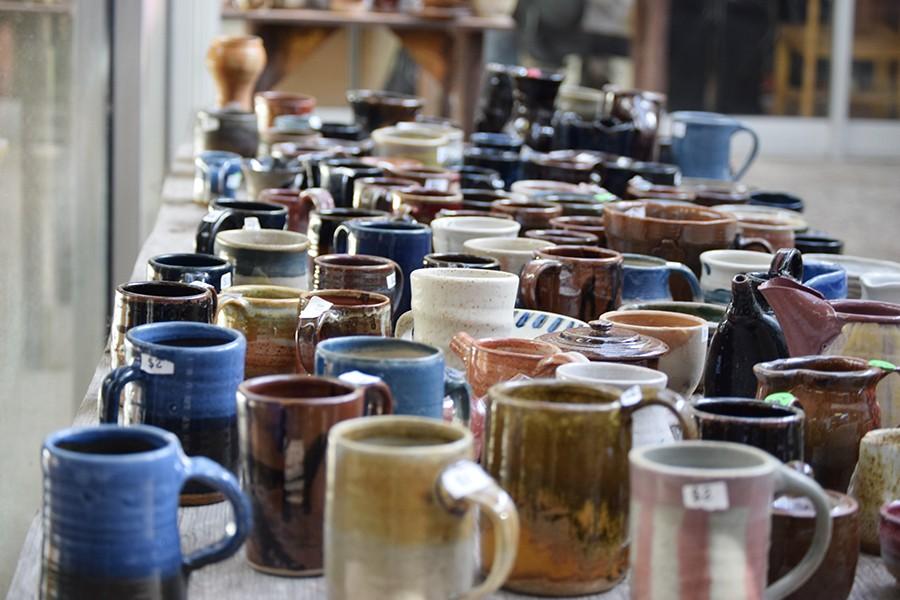Pottery Sale contributes to department funds
Student ceramics works reflect diverse community, make revenue
Dozens of pottery items lay in wait for customers during the week long pottery sale in the Art Building Atrium.
Dec 9, 2015
The art department’s ability to supplement budget costs to help students acquire necessary supplies illustrates the gift of original creation bred in an unrestricted environment.
The art department sustains its clay and tool budget by selling pottery made by students and staff during the Pottery Sale they have every semester.
The sale has been going on for 30 years. For those years students have been able to pay a small material fee of $9 to be able to use an almost unlimited amount of clay in class. The Pottery Sale this semester was held last week and ended on Friday.
Not being able to do this would create restrictions that impede the students’ ability to advance and reach their full potential, according to instructional aide Allen Perlof of the art department. He has been helping students at Contra Costa College for 15 years.
Perlof has been working artistically with ceramics for 30 years.
He has seen that allowing students to use as much clay as they need lets them explore their creativity and practice the skills they have learned in class.
Perlof said that if students had to buy the clay themselves there would be some reservations as to how much they would be able to create.
“It is a limiting thing.” instructional aide Darnell Turner said. “A bag of clay is roughly $15.”
Depending on how many pieces they will do and how big the piece will be, students will go through three bags on average per semester per student.
“Some students would not have the extra income to pay for bags of clay,” fine and media arts adjunct professor Jiajun Lu said.
Although there is no limit to the amount of clay a student can use, art teachers like Lu make sure students are well aware that they must take into consideration their fellow potters.
The Pottery Sale has an average income of $2,500.
Last semester they only made $2,000, some $500 below their average. Lu said that sometimes they make $3,000-$4,000 and sometimes $2,000.
The pieces are low in price. They start at $1 and go up to as much as $30.
Near the east side entrance to the Art Building on the left hand side lies a glass display in which the art instructor’s choice pieces were displayed for a silent auction.
Each piece is identified by its given number and is chosen using a bidding chart located on the table right in front of it.
The silent auction has no price limit and bids can soar to upward of $30 for a single piece.
In the open sky room by the east entrance was displayed many pieces that ranged from $1-10. In the Eddie Rhodes Gallery, a few steps away, there were finer pieces ranging from $10-$30.
These prices would be higher if the pieces were sold with labor taken into consideration when establishing the cost.
“The price does not match the time. The pots could go for much higher,” Perlof said. Some creations can take up to 28 hours in total to make.
If a piece taking 15 hours to make goes at $3, the labor cost would be .20 cents an hour.
Although the economic pricing is well under the normal standard, the opportunity and benefit this sale creates for patrons makes up for the low prices.
For undecided major Krystle Hasket, a student enrolled in Art 140, art is a form of expression in which you can manifest your feelings into your creations.
Perlof said in ceramics you learn a craft, teaching you discipline, management of time, and you are able to relax and focus on the piece you are forming.
The limit of what students can create is based on the limits of their imagination Perlof said.
“They create it from their hands. They create beauty and beauty makes everyone happy,” Juli Wulferdingen, humanities and philosophy adjunct professor, said.
“That is why I bought said, a lot.”
She said it is also nice knowing that she will have purchased not only a great piece of art due to the great effort of the potter, but also helped buy part of a bag of clay.



